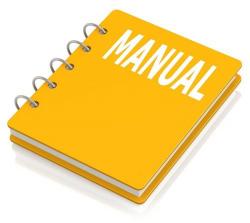Chevrolet Blazer 1973-2005 Workshop Repair & Service Manual
Catalog:
Model:
Complete digital official shop manual contains service, maintenance, and troubleshooting information for the Chevrolet Blazer 1973-2005. Diagnostic and repair procedures are covered in great detail to repair, maintain, rebuild, refurbish or restore your vehicle like a professional mechanic in local service/repair workshop. This cost-effective quality manual is 100% complete and intact as should be without any missing pages. It is the same factory shop manual used by dealers that guaranteed to be fully functional to save your precious time.
This manual for Chevrolet Blazer 1973-2005 is divided into different sections. Each section covers a specific component or system and, in addition to the standard service procedures, includes disassembling, inspecting, and assembling instructions. A table of contents is placed at the beginning of each section. Pages are easily found by category, and each page is expandable for great detail. It is in the cross-platform PDF document format so that it works like a charm on all kinds of devices. You do not need to be skilled with a computer to use the manual.
MAKE: Chevrolet
MODEL: S-10 Blazer (a.k.a. Chevrolet Blazer, Chevrolet TrailBlazer, Opel Blazer, GMC S-15 Jimmy, GMC Jimmy)
YEAR: 1983 1984 1985 1986 1987 1988 1989 1990 1991 1992 1993 1994 1995 1996 1997 1998 1999 2000 2001 2002 2003 2004 2005
MAKE: Chevrolet
MODEL: K5 Blazer (a.k.a. GMC Jimmy, Full size Blazer)
YEAR: 1973 1974 1975 1976 1977 1978 1979 1980 1982 1983 1984 1985 1986 1987 1988 1989 1990 1991
EXCERPT:
2004 ENGINE Engine Mechanical - 4.3L - Blazer/S-10, Jimmy/Sonoma
ENGINE IDENTIFICATION
Fig. 6: Locating Vehicle Identification Number Derivative
The Vehicle Identification Number (VIN) Derivative is located on the left
side rear of the engine block (1) or on the right side rear (2) and typically is
a 9 digit number stamped or laser etched onto the engine at the vehicle assembly plant.
The first digit identifies the division.
The second digit identifies the model year.
The third digit identifies the assembly plant.
The fourth through ninth digits are the last six digits of the VIN.
Fig. 7: Locating Engine Identification Number (Romulus Engine Plant)
Engines built at the Romulus engine plant have the engine identification number located at the right front top of the engine block.
The first digit (1) is the source code.
The second and third digits (2) are the month of build.
The fourth digit (3) is the hour of the build.
The fifth and sixth digits (4) are the date of build.
The seventh, eighth, and ninth digits (5) are the broadcast code.
DIAGNOSTIC INFORMATION AND PROCEDURES
DIAGNOSTIC STARTING POINT - ENGINE MECHANICAL
Begin the system diagnosis by reviewing the Disassembled Views, Engine Component Description, Lubrication Description, New Product Information and the Drive Belt System Description. Reviewing the description and operation information will help you determine the correct symptom diagnostic procedure when a malfunction exists. Reviewing the description and operation
information will also help you determine if the condition described by the customer is normal operation. Refer to Symptoms - Engine Mechanical in order
to identify the correct procedure for diagnosing the system and where the procedure is located.
SYMPTOMS - ENGINE MECHANICAL
Strategy Based Diagnostics
1. Perform the Diagnostic System Check - Engine Controls in Engine
Controls - 4.3L before using the symptom tables, if applicable.
2. Review the system operations in order to familiarize yourself with the system functions. Refer to Disassembled Views, Engine Component
Description, Lubrication Description, New Product Information and to
Drive Belt System Description.
All diagnosis on a vehicle should follow a logical process. Strategy based diagnostics is a uniform approach for repairing all systems. The diagnostic flow may always be used in order to resolve a system problem. The diagnostic flow is the place to start when repairs are necessary. For a detailed explanation, refer to Strategy Based Diagnosis in General Information.
Visual/Physical Inspection
Inspect for aftermarket devices which could affect the operation of the Engine. Refer to Checking Aftermarket Accessories in Wiring Systems.
Inspect the easily accessible or visible system components for obvious damage or conditions which could cause the symptom.
Check for the correct oil level, proper oil viscosity, and correct filter
application.
Verify the exact operating conditions under which the concern exists. Note factors such as engine RPM, ambient temperature, engine temperature, amount of engine warm-up time, and other specifics.
Compare the engine sounds, if applicable, to a known good engine and make sure you are not trying to correct a normal condition.
Intermittent
...





